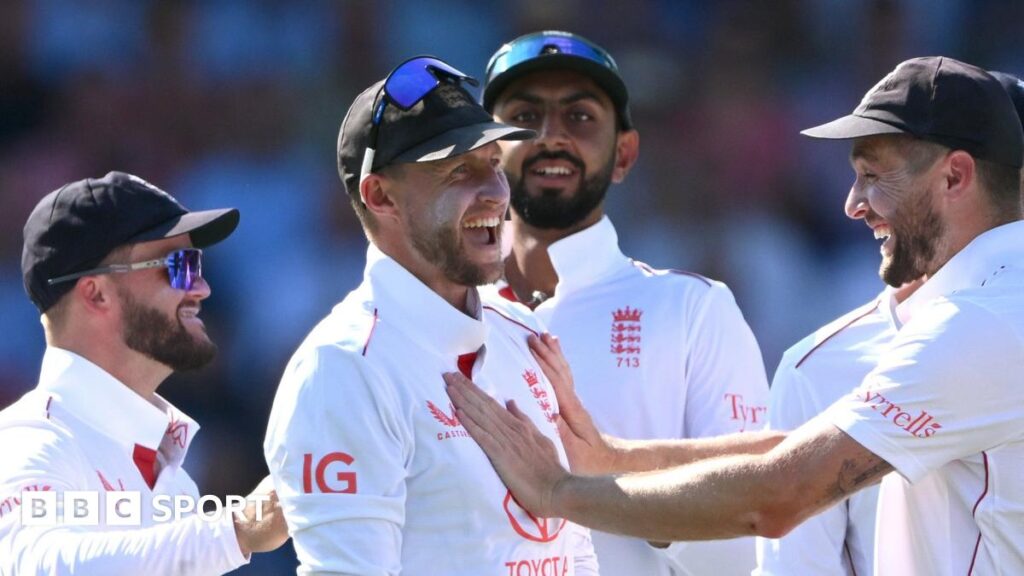Root’s first catch came in his fourth Test, holding New Zealand’s Peter Fulton off the bowling of Steven Finn at long-on in 2013. The record-breaking catch came in Root’s 156th Test, 12 years later.
From all of them, Root has a couple of favourites. One was a lunge to hold a parry off James Vince and dismiss Sri Lanka’s Shaminda Eranga at Chester-le-Street in 2016. The other was a full-stretch dive at short cover to hold Indian Ajinkya Rahane in Chennai in 2021, a game in which Root also made a double hundred and probably his best win as England captain.
In an Ashes year, there is an Anglo-Australian subplot, a further layer of competition between premier batters Root and Steve Smith.
Smith is on 200 catches from 118 Tests, with his 119th against West Indies in Grenada beginning on Saturday. Root averages just over 0.7 catches per Test innings – on the high side for the best grabbers in the game. Smith’s average of almost 0.9 is astonishing.
For either man, or any of the other top catchers in the world, the common denominator is practise.
But taking catch after catch in training is barely half of the story. The easy bit of the drill is knowing the catch is coming. In a Test, it can be hours or days. Standing, crouching and waiting, hoping for the edge and having the concentration to be ready when it comes.
“That’s the beauty of it,” says Root. “You’re training your body, over and over again, that when the ball comes, you’re in the right position, lined up nicely, and staying nice and relaxed.
“It might be two days before you take a catch, but if it’s drilled into you, time and time again, it makes it that little bit easier. It takes that panic out of it.
“There are situations where the conditions are in the bowlers’ favour and you feel very much in the game the whole time. You are naturally in a very good headspace to catch. There are other times when it comes out of nowhere, catching you off guard.”
For the best catchers, being positioned in the busiest areas means the most chances. While that means most success, it also raises the likelihood of an occupational hazard: a drop.
“There are times when you want the floor to swallow you up, to disappear,” says Root. “The only way that you are going to feel remotely better is getting another opportunity, trying to put it right.
“You’ve got to want the ball, that next chance to come to you and be confident in yourself you’re not going to make the same mistake twice.”
Tracking drops is difficult, not least because it is hard to quantify what counts as a chance. One man’s dolly is another man’s screamer. According to CricViz, the 12 chances Root missed off Stuart Broad was more than he put down off any other bowler.
“He has let me know,” says Root. “He’s probably got a record of how many, against who, what the score ended up being and what it should have been in his mind.”
On the flip side, it was Broad’s famous 8-15 against Australia at Trent Bridge in 2015 that had Root feeling like he could catch everything. Three of Broad’s haul came thanks to Root’s mitts.
“I felt like the ball was coming all the time,” says Root. “I was very confident. I’d caught a few before that game. It was one of those feelings where I was thinking, ‘Right, come on, any opportunity I’m clinging on to it’.”
Root was in the same team as Broad on 114 occasions and with James Anderson 110. However, neither of England’s two GOATs are at the top of Root’s list of favourite bowlers to be at slip to.
“When conditions suit it swinging around, Ben Stokes has got this incredible knack of nicking people off,” says Root.
“There have been two occasions in the past couple of years where he’s bowled a no- ball, then the next ball has been an edge, and I’ve dropped it.
“He always says, ‘Whenever I bowl a no-ball, make sure you’re ready’. Against Zimbabwe this summer, he bowled a no-ball. I shouted from first slip, ‘I’m ready’, then I dropped the next ball. He was absolutely fuming.”


